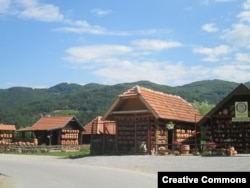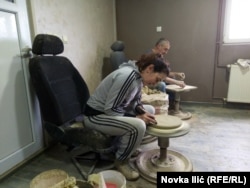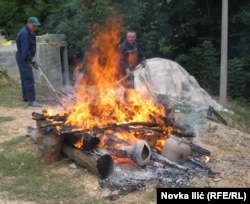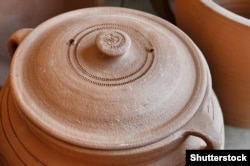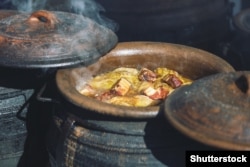The Savic family is one of 18 pottery-making households in Zlakusa, whose ancient craft has won the village a place on UNESCO’s list of "intangible heritage."
The practice of making clay pots in Zlakusa dates back at least 400 years. The techniques used in the village today are virtually the same (minus the occasional stone-crushing machine) as they always were.
The village is uniquely placed to source both clay and stone from nearby deposits.
The combination of high-quality clay and stone give the Zlakusa cookware strength and an intangible but widely attested flavor boost to traditional foods that bubble for hours inside the pots.
The husband-and-wife team has worked as potters in Zlakusa for over 20 years.
In its densely worded official inscription of Zlakusa, UNESCO describes the treasure of the village as “the knowledge and skills” involved in making unglazed vessels for “thermic food processing” (also known as cooking).
The drying process lasts several days and, as the water evaporates, the pots shrink significantly.
The final step of firing is sometimes done on open bonfires in Zlakusa, but only if stable weather permits.
Firing in Zlakusa is done at a relatively low temperature of around 700 to 800 degrees Celsius, and the pots are not glazed, giving them a rough texture and ensuring a slow, even heat during cooking.
According to Food And Wine magazine, which conducted a rigorous blind test of clay pots, “Everything cooked in clay tasted better than the same recipes cooked in metal pans. Rice smelled more floral and toasty.... Beans were creamy and tender without their skins falling apart.”
The main disadvantage of clay is that it can break when subjected to “heat shock” from a sudden change in temperature.
From start to finish, each pot takes around 20 days to make. But according to one local, if treated with care, a Zlakusa pot will last “for 50 years.”






